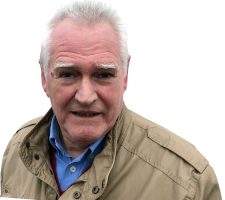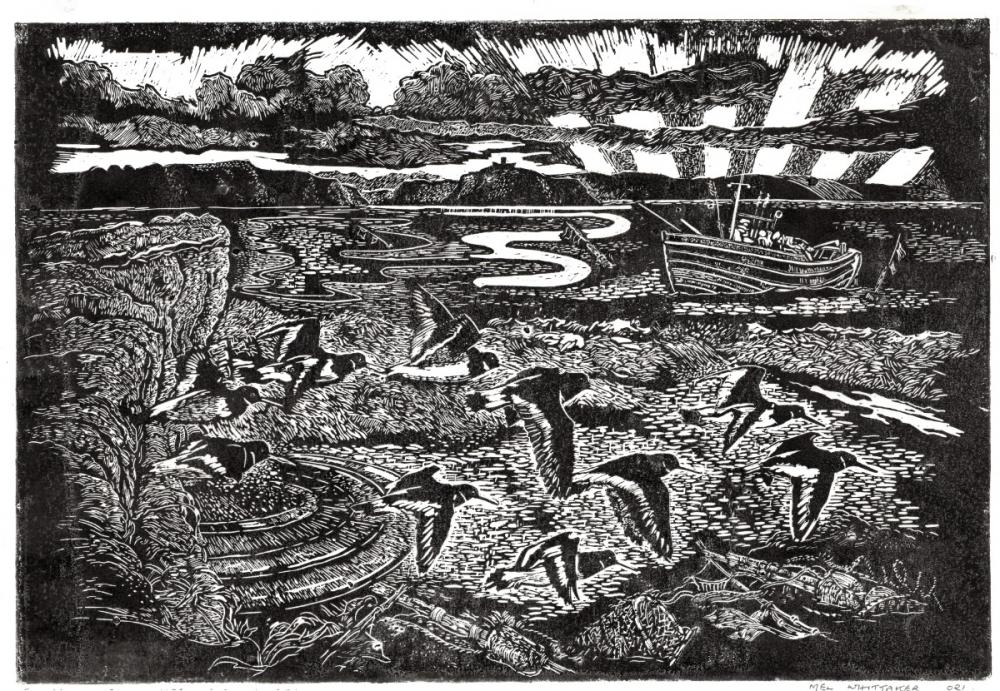search
date/time
 | Lancashire Times Weekend Edition |

Mike Tilling
Arts Correspondent
10:01 AM 9th June 2023
arts
East Coast Open Melville Whittaker

It is always enlightening to speak to an artist with his or her work in front of you. With Melville Whittaker, this is especially true. He is (I hope he will not mind me saying ) the oldest of the one hundred exhibitors in the East Coast Open. But what an inspiring presence he is.
The first thing he utters, as I knock on his door in Filey, is a friendly invitation to visit his workshop in the back garden. It is filled with the memorabilia of a lifetime of creativity. There are tools of varying sorts hanging from the rafters; engraved propellers salvaged from old ships; engraving plates and easel paintings in a variety of media. It is testament to a lifelong commitment to the arts.
Melville’s exhibition work shows a section of Filey Brigg. He points out that visiting the site would be dangerous for the unwary because of treacherous tides. Oyster catchers fly from left to right against a background of stones and cliffs. He grins at me when I ask if Escher is an influence here. He is pleased because Escher’s practice of integrating different elements into a single whole is something Melville is trying to achieve, showing how animal life, rocks, sea and sky all work in harmony.
The darkness of his engraving may appear, at first sight, to be forbidding, but that is belied by the vitality of the birds and the waves. A fishing coble stands to the right. While this could be almost any seascape from anywhere in Britain, it is still distinctly Filey.
When I ask Melville about his influences, he has to think for a moment. And not for the first times when an interviewee comes up with an answer, the names are unfamiliar to me. Melville started work in the printing trade so he lists one of the major influences as Henry Wanless, but also admires the pen and ink work of Ernest Dade. Melville also remembers the person who gave him his start in teaching. Joan Lassie was an administrator, but helped him to get classes together – some in printing, others in water colouring. It is a varied background and explains the sheer diversity of expertise that I saw in his workshop.
Melville has very decided views on how a novice artist should acquire the necessary skill to succeed: start small and gradually add detail. By small he means begin with a post card size version of what you want to draw, making sure that the fundamental outlines are in place. Allow the work to grow in size adding detail as you go until you reach the size and quality that you want. Unusual, perhaps even original, advice but as with so many things in creating a work of art, it may be an approach that suits a particular individual.
Did you know that the song Scarborough Fair had more than one verse? I did not, but illustrating the verses is Melville’s next project. He showed me some of the draft work and it looks original and exciting. His knowledge of the detail of the song comes from singing with a Filey folk group. His voice was so good he was once offered a contract with the Swingle Singers.
Clearly, a man of many talents and considerable originality.